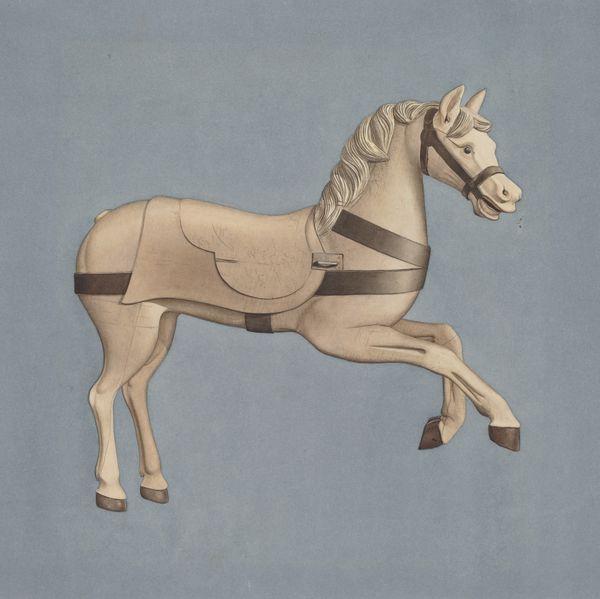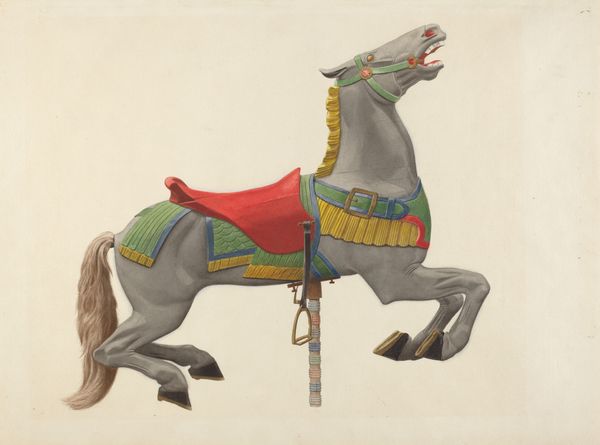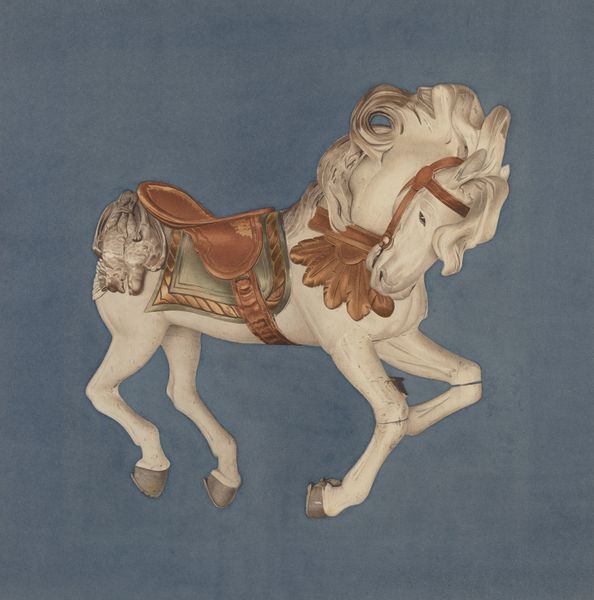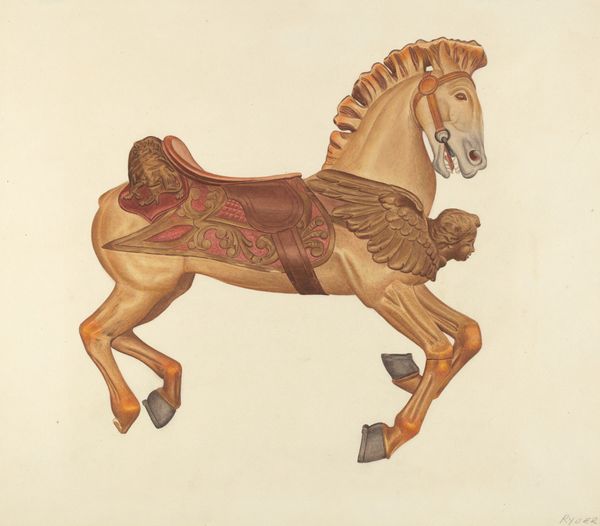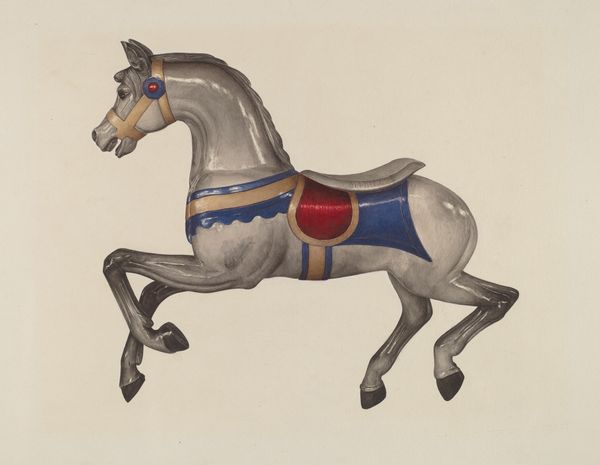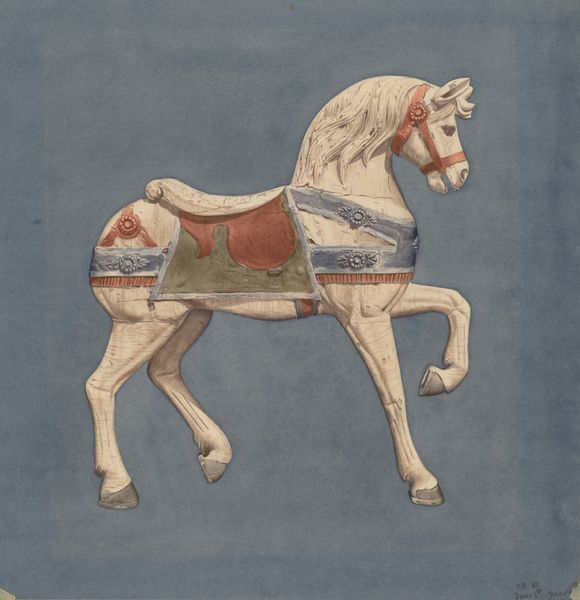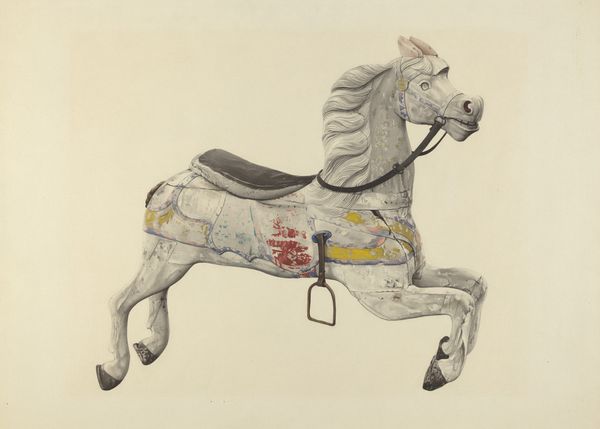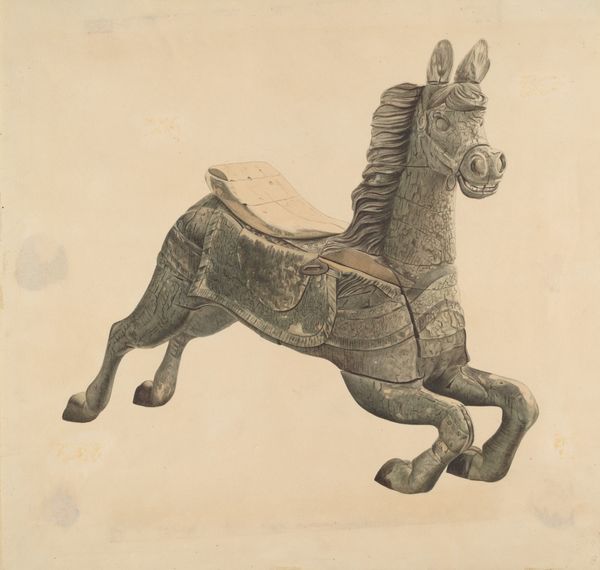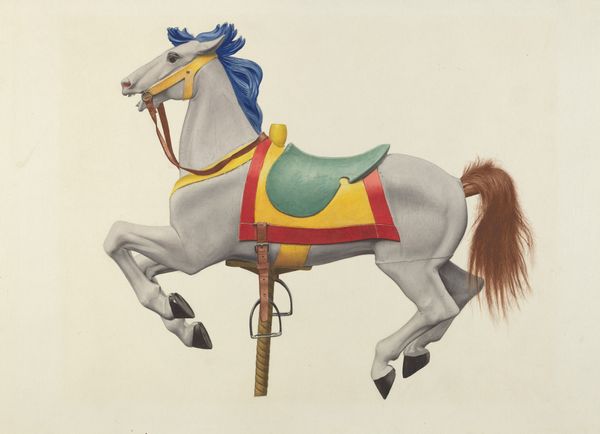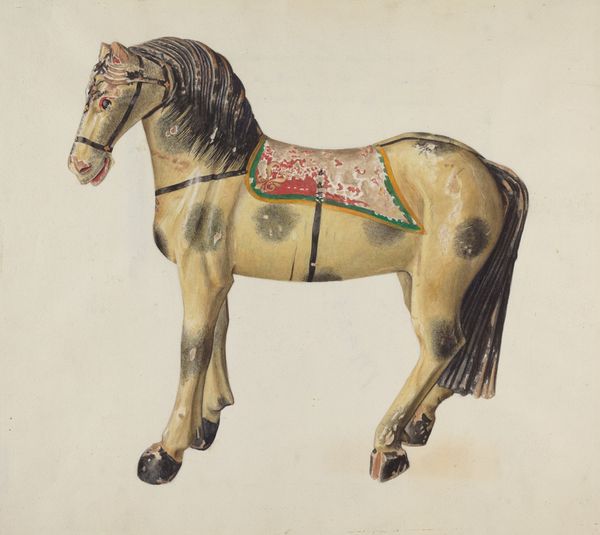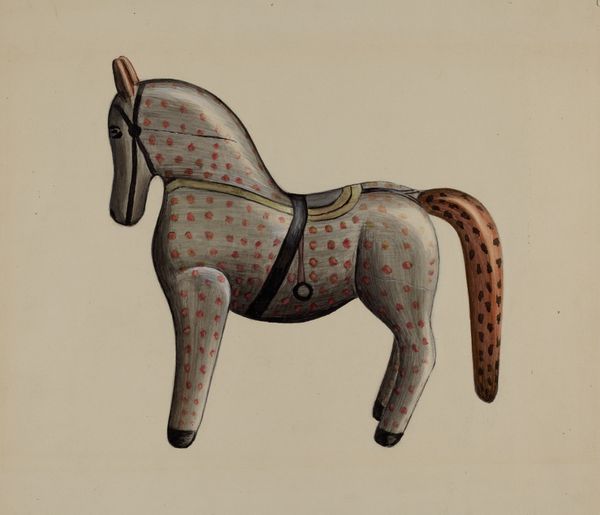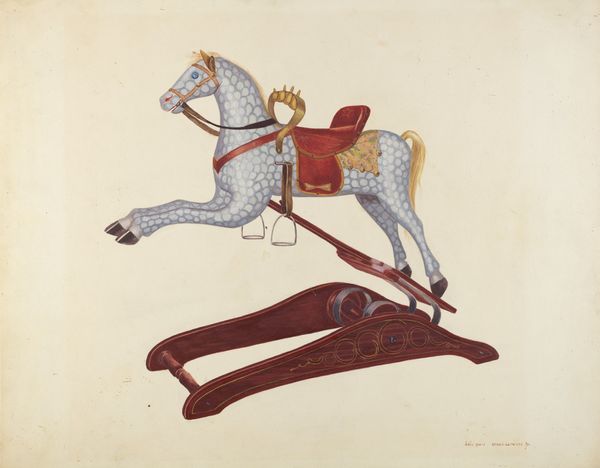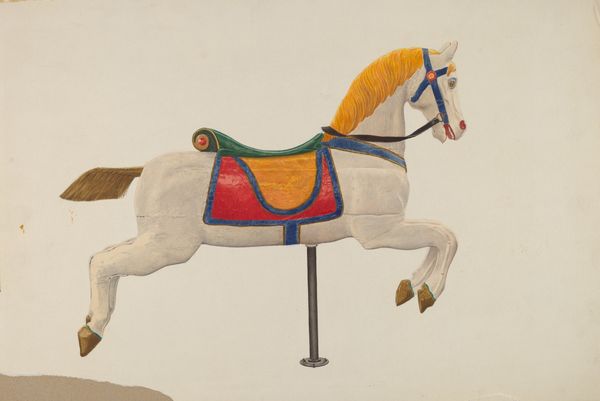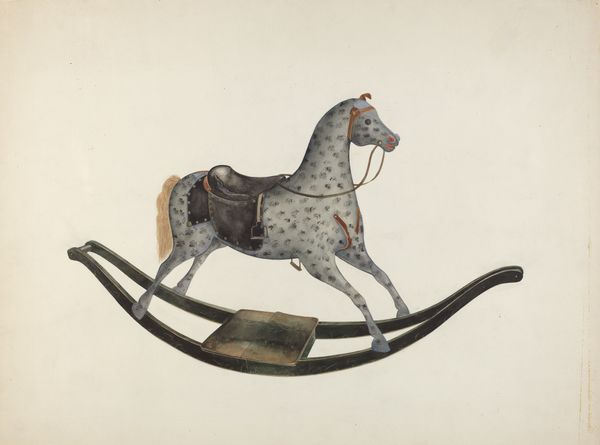
drawing, coloured-pencil
#
drawing
#
coloured-pencil
#
figuration
#
realism
Dimensions: overall: 35.9 x 48.8 cm (14 1/8 x 19 3/16 in.) Original IAD Object: 72" long
Copyright: National Gallery of Art: CC0 1.0
Curator: What strikes me first is the implied motion, frozen in the formalism of the line. Editor: Yes, I sense a sort of…stillness, a suspended moment of potential energy. But I find the materials quite fascinating; looking at "Carousel Horse," made around 1939 by Henry Tomaszewski using colored pencil, I start to wonder, why drawing? What informed that choice of material to depict this iconic figure? Curator: The colored pencil medium offers a unique intersection of precision and texture. The realism achieved through shading creates volume, while the colored pencil maintains an approachable quality. It brings this fantastical object down to earth, while still keeping that fantastic charm. Editor: That makes sense. This object originates, of course, from very real and industrialized places of amusement—think Coney Island and its labor force that catered to mass leisure. Considering Tomaszewski's choice of realism, perhaps we're prompted to look critically at the socio-economic roots of play itself. Who made these horses? How accessible was this type of fun to the masses, during the depression era when this drawing was done? Curator: I appreciate that critical lens. The execution reveals careful planning. There's a distinct contour separating the horse from the cool background, isolating it as a subject worthy of meticulous consideration. You mentioned social access – to play. But there's something for all: it is almost as though its existence has been rarefied here, rendered special for artistic consideration, almost untouchable. Editor: And beyond considering social access, there is something so distinctly intimate and careful here—not at all mass produced, although of course, a study of an item of popular design. Think about the role these objects had in fueling imaginations through tactility—children actually riding these. By choosing a very hands-on approach like colored pencil drawing, it's almost as if the artist wanted to echo that intimate exchange. The art has recreated that potential between art and audience! Curator: That really resonates. It seems we’re drawn to this drawing because of what is there and what it can represent, from craftsmanship and technique to labor and pleasure, a true study of how art can bridge experience. Editor: Absolutely, it is more than the surface. When you see how it was made and why, then it has even deeper value, certainly.
Comments
No comments
Be the first to comment and join the conversation on the ultimate creative platform.
